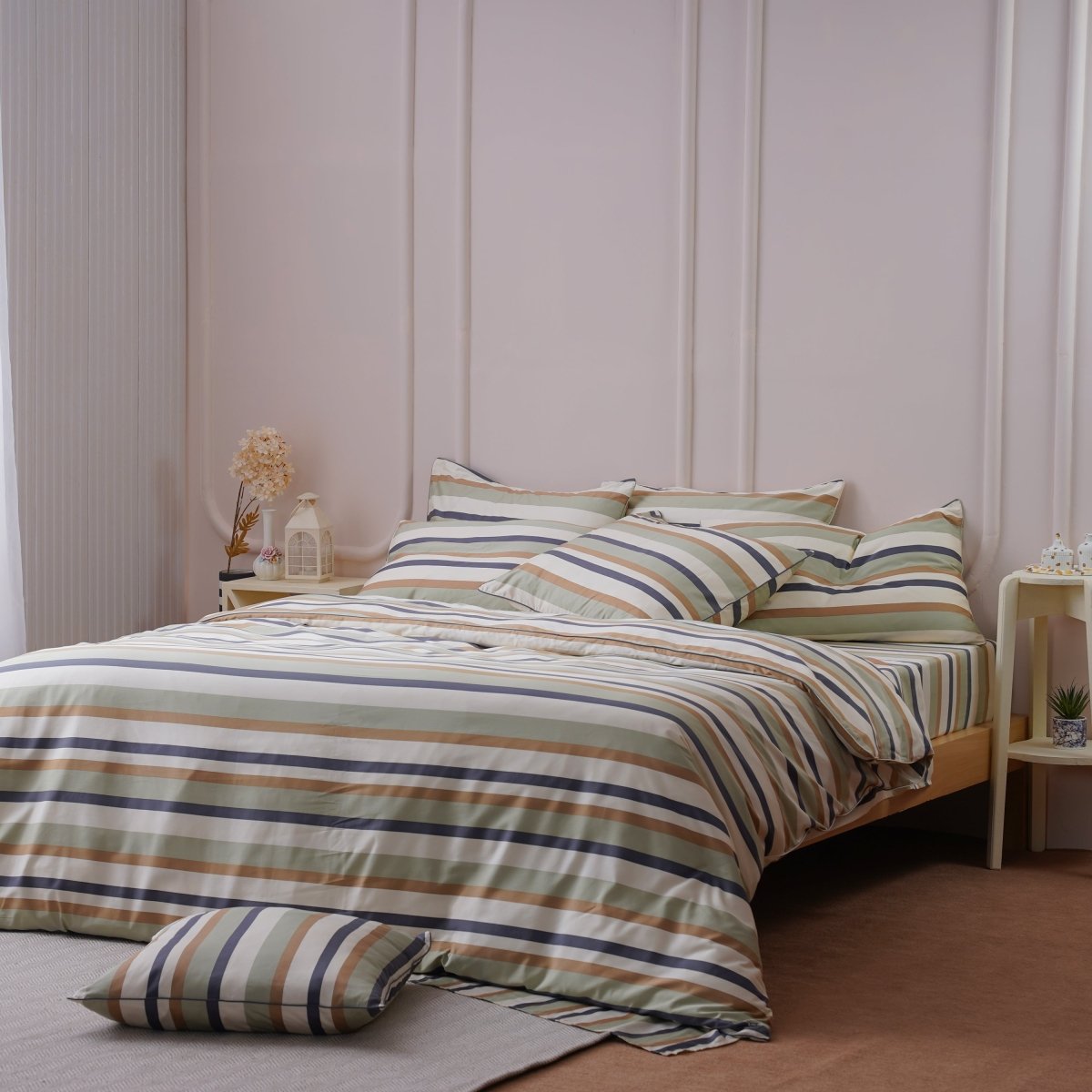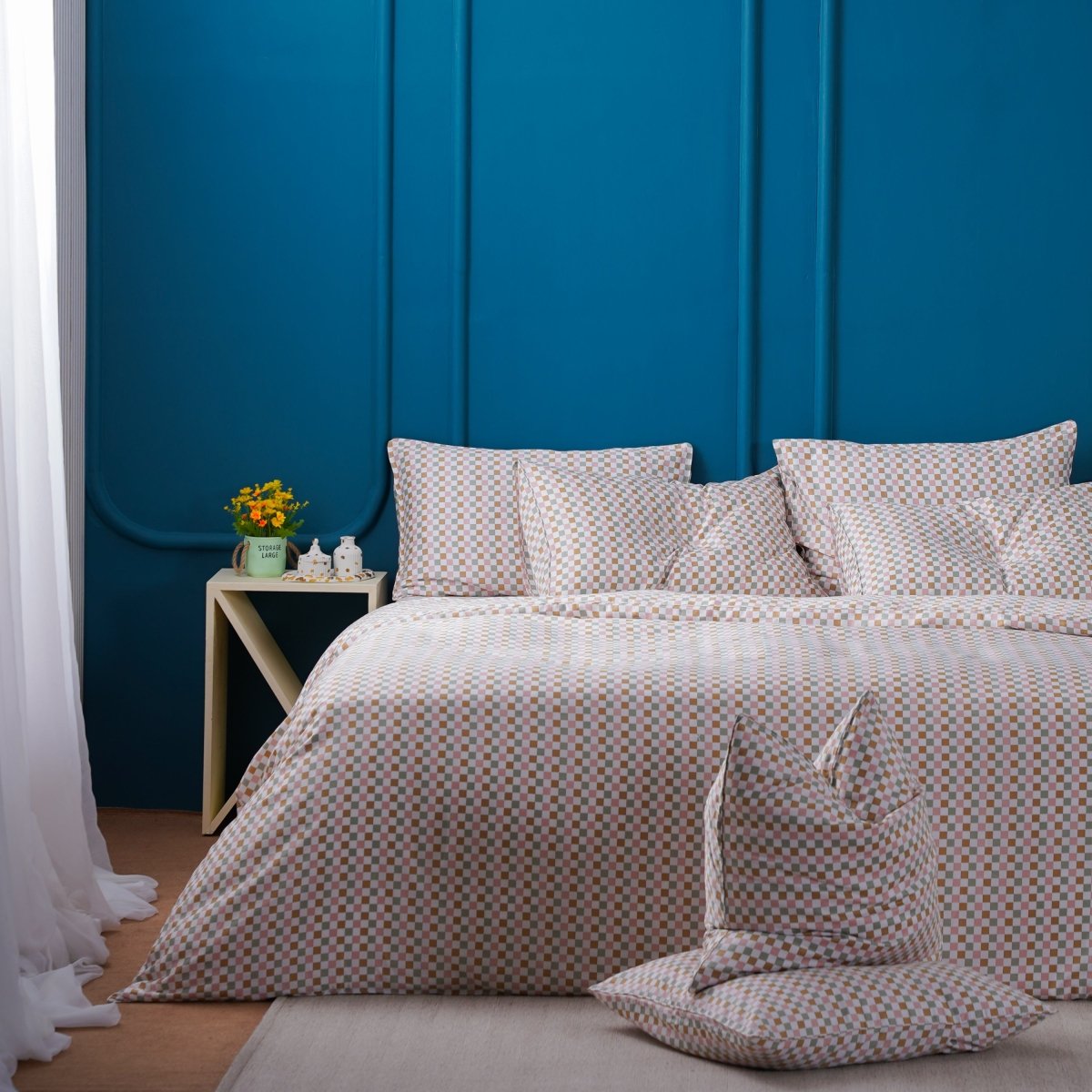Sleep Smart: Finding the Ideal Room Temperature for Sleeping
Getting a good night’s sleep is essential for overall health and well-being, and the room temperature of your sleeping environment plays a critical role. Whether it’s the sweltering heat of summer or the chilly nights of winter, finding the ideal room temperature for sleeping can be a challenge.
In this guide, we’ll explore the perfect sleeping temperatures for each season, offer practical tips, and recommend the best types of sheets to help you sleep comfortably year-round.
The Ideal Sleeping Room Temperature: Finding Your Ideal Temperature
Studies suggest that the best room temperature for sleep is between 15.5°C and 19.5°C (60°F to 67°F). Maintaining the best temperature for sleep can significantly improve sleep quality and overall health. This range helps your body maintain its natural thermoregulation and body temperature, promoting deeper and more restful sleep. Regulating your core body temperature is crucial for sleep onset and quality. However, achieving this ideal room temperature can vary with the changing seasons. Let’s break down how to adjust your sleeping environment and bedding for each season.
Spring: Transitioning to Warmer Nights
Spring brings a gradual increase in temperature, and it’s crucial to stay adaptable as the weather fluctuates. The ideal sleeping room temperature for spring is between 16°C and 18°C (60.8°F to 64.4°F).
Tips for Spring Sleeping:
-
Layer Up: Use lightweight blankets that can be easily added or removed as needed.
-
Switch to Breathable Fabrics: Cotton and bamboo sheets are excellent choices for their breathability and moisture-wicking properties.
-
Maintain Airflow: Open windows or use fans to keep air circulating and prevent your room from getting stuffy.
-
Consistent Temperature: Maintaining a consistent room temperature can help you fall asleep more easily as the weather fluctuates.
Recommended Sheets:
-
Cotton Sheets: Soft, cool, and breathable, perfect for the fluctuating temperatures of spring.
-
Bamboo Sheets: Soft, cooling, hypoallergenic, and moisture-wicking, ideal for managing those unexpected warm nights.
Summer: Beating the Heat
Summer nights can be challenging due to high temperatures and humidity. Staying cool is the key to a restful night’s sleep. The ideal sleeping temperature for summer is between 18°C and 20°C (64.4°F to 68°F).
Tips for Summer Sleeping:
-
Use Light, Breathable Bedding: Ditch heavy blankets and opt for lightweight quilts or coverlets.
-
Cool Down Your Room: Use fans, air conditioning, or open windows to keep your bedroom cool. High temperatures can disrupt REM sleep, leading to restlessness and decreased sleep quality. If your room is hotter than outside, open the windows.
-
Opt for Moisture-Wicking Fabrics: Sheets made from bamboo can help keep you comfortable. Keeping your room cool is essential for maintaining good sleep quality during hot summer nights.
Recommended Sheets:
-
Linen Sheets: Highly breathable and moisture-wicking, linen is the ultimate summer bedding.
-
Bamboo Sheets: Made from bamboo plants, bamboo bedding is silky, cool, and excellent at regulating temperature.
Autumn: Embracing Cooler Nights
As temperatures begin to drop, it’s time to add a bit more warmth to your bedding while still maintaining breathability. The ideal sleeping temperature for autumn is between 17°C and 19°C (62.6°F to 66.2°F).
Tips for Autumn Sleeping:
-
Layer with Blankets: Start layering with a medium-weight blanket or duvet. Proper layering can help maintain optimal blood flow, preventing you from feeling too cold or too warm.
-
Choose Warmer Fabrics: Switch to slightly warmer sheets but avoid anything too heavy.
-
Keep Air Circulating: Use a fan on a low setting to maintain airflow without getting too cold.
Recommended Sheets:
-
Cotton Sateen: Smooth and slightly heavier than percale, providing a bit more warmth while remaining breathable.
-
Flannel Sheets: Soft and cosy, ideal for those who prefer extra warmth as nights get cooler.
Winter: Staying Warm and Cosy
Winter calls for bedding that retains warmth without causing overheating. It’s all about layering and choosing the right materials. The ideal sleeping room temperature for winter is between 15°C and 17°C (59°F to 62.6°F).
Tips for Winter Sleeping:
-
Use Heavier Bedding: A high-tog duvet or a thick comforter can help keep you warm.
-
Layer Wisely: Combine sheets, blankets, and duvets to create an adjustable warmth system.
-
Keep the Cold Out: Ensure windows are properly sealed to prevent drafts.
-
Use a Hot Water Bottle: Using a hot water bottle can provide additional warmth and comfort during cold winter nights.
Recommended Sheets:
-
Flannel Sheets: Perfect for cold winter nights, offering warmth and softness.
-
Microfiber Sheets: Affordable and warm, microfiber sheets can provide the insulation needed during the colder months.
Achieving the perfect sleeping temperature is crucial for quality rest and overall well-being. By adjusting your bedding and sleep environment according to the season, you can ensure a comfortable and restful night’s sleep all year round. Maintaining an optimal sleep environment also supports the body's circadian rhythm, promoting better sleep quality. Managing light exposure in your bedroom can further enhance your sleep quality by regulating melatonin production. Explore our collection of season-appropriate sheets and transform your bedroom into a haven of comfort.
Ready to upgrade your sleep for every season? Visit Sheet Story for a wide range of breathable, temperature-regulating sheets designed to keep you comfortable no matter the weather.
Shop now and sleep better all year long!






